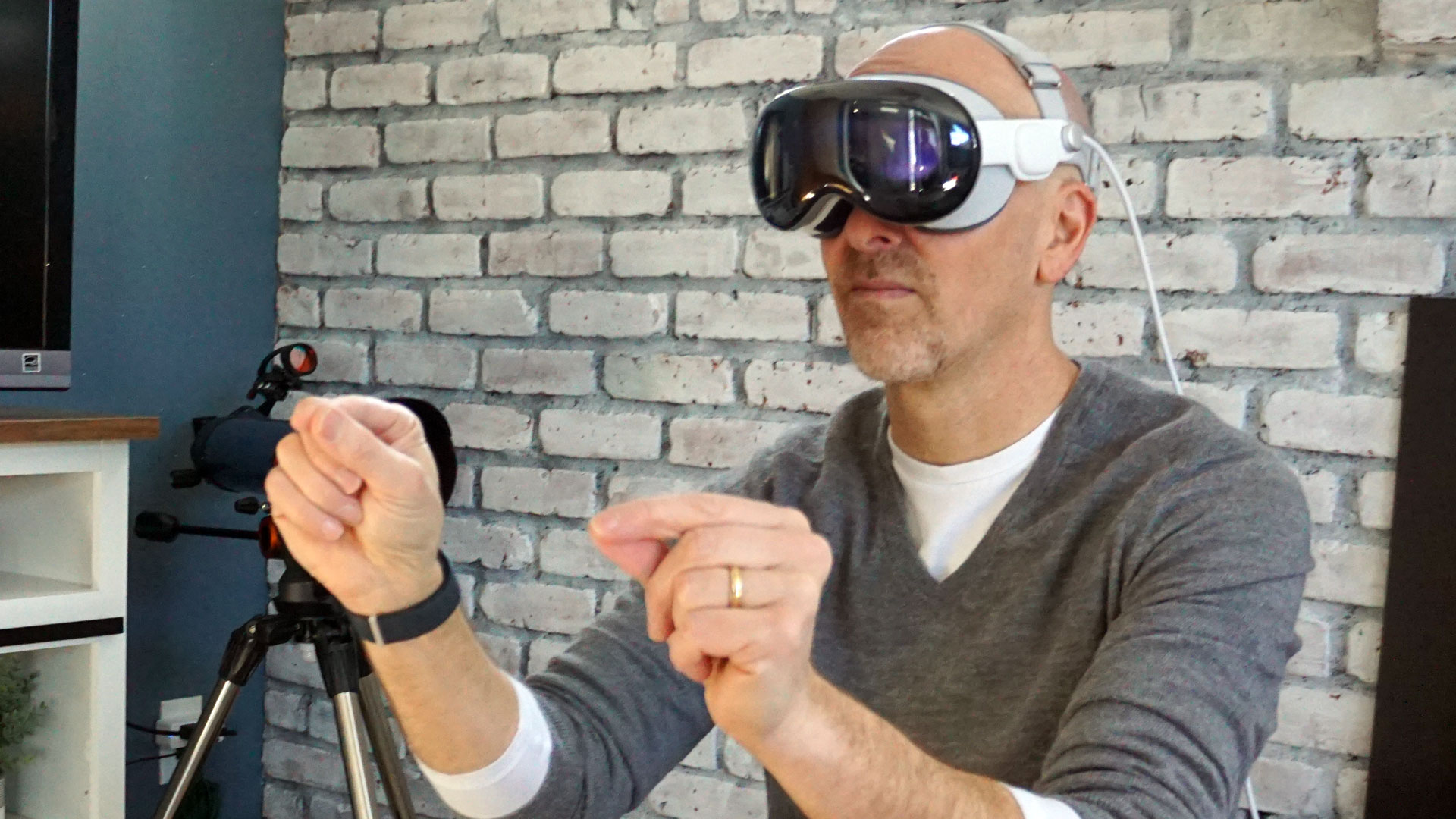The best part of the Vision Pro could be coming to all your Apple devices
A new way to interact with your iPhone and Mac

Apple’s Vision Pro headset is packed with impressive features, and its gesture control system is one of the highlights – and there could be some exciting news for users of other Apple devices on the horizon if an intriguing development comes to fruition.
As spotted by AppleInsider, it looks like Apple is working to bring the Vision Pro’s gesture platform to its other devices. That means you could soon use gestures to send a text on your iPhone or launch an app on your MacBook. No more fruitlessly digging around in settings or tediously sifting through your files – just a quick wave of your hand and the task is complete. It would be the best of the Vision Pro on all your other Apple devices.
At least, that’s the idea anyway. It’s all laid out in a recently published patent that details various ideas about using gestures on different Apple devices. While many of the illustrations and comments are focused on the Vision Pro, Apple has also included several drawings of people performing in-air gestures while using tablets and computers, and they're not wearing a headset.
That suggests that Apple could be working on gestures that can be detected without the help of a Vision Pro. That has several implications: for one thing, it might make gesture controls a lot more accessible if an expensive $3,499 headset is not a requirement. For another, it could help to make this aerial gesture system much more widespread across Apple’s devices, making it a key selling point for the company and a great experience for users not matter what product they have.
Apple’s iPhones and iPads already use gesture controls (albeit ones that require contact with the touchscreen). Bringing aerial gestures to these devices might therefore be fairly straightforward, as iOS users are already accustomed to interacting with their products in a similar way. Gestures are also a key part of using a Mac thanks to Apple’s trackpads and the Magic Mouse, both of which use these controls.
Apple is taking this idea seriously

AppleInsider suggests another potential implication of this idea: touchscreen Macs. A subset of Apple fans has clamored for Macs to be fitted with touchscreens for years, but Apple has steadfastly maintained that this would be bad for ergonomics. If Macs instead adopt in-air gestures, there might not be any need for a touchscreen, something that may make both users and Apple happy.
Adding this kind of system might also impact user accessibility, something Apple’s devices have always been very good at accommodating. If someone finds using a mouse or keyboard difficult, in-air gestures might provide a much easier way of controlling their device.
Get daily insight, inspiration and deals in your inbox
Sign up for breaking news, reviews, opinion, top tech deals, and more.
Interestingly, the patent also delves into how a monitoring system that's looking out for your gestures would be able to avoid false positives, for example if you scratch your head or adjust your glasses. Getting that right would be a key milestone to ensuring that Apple’s gestures are more intuitive than frustrating.
This patent isn’t the first time Apple has explored an idea like this. We’ve seen the company file patents for aerial iPhone gestures and AirPods Pro controls in 2020, for instance, and a Kinect-like system for in-air gesture controls that was filed in 2008, among many other examples. So it’s clear that Apple has a long-running interest in this.
Of course, since this is only a patent, these concepts might never make it into a finished product. But the sheer number of in-air gesture patents that Apple has filed over the years suggests that the company is taking the idea very seriously indeed.
You might also like

Alex Blake has been fooling around with computers since the early 1990s, and since that time he's learned a thing or two about tech. No more than two things, though. That's all his brain can hold. As well as TechRadar, Alex writes for iMore, Digital Trends and Creative Bloq, among others. He was previously commissioning editor at MacFormat magazine. That means he mostly covers the world of Apple and its latest products, but also Windows, computer peripherals, mobile apps, and much more beyond. When not writing, you can find him hiking the English countryside and gaming on his PC.